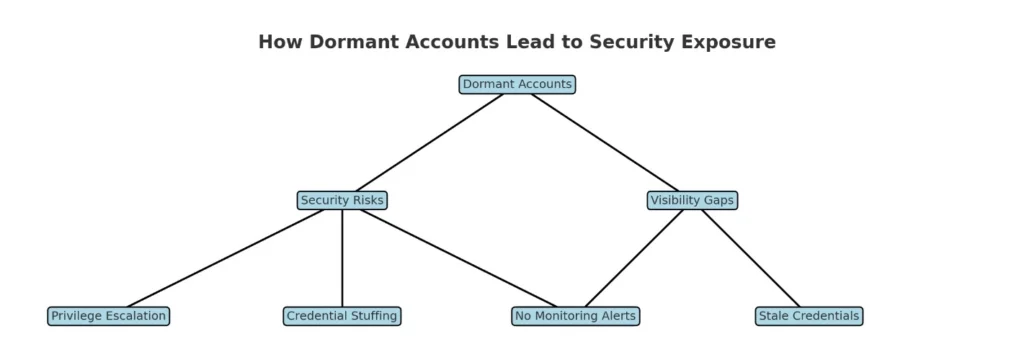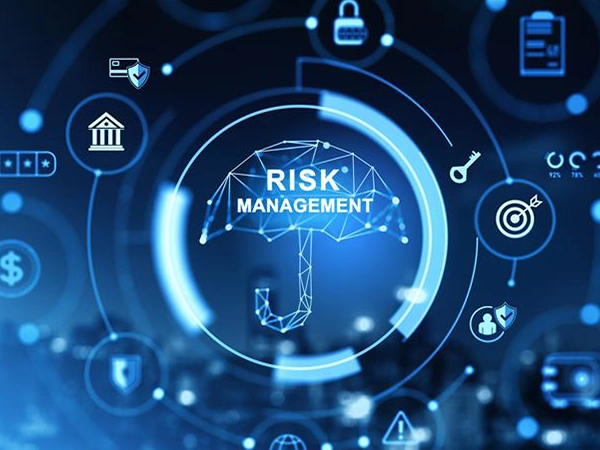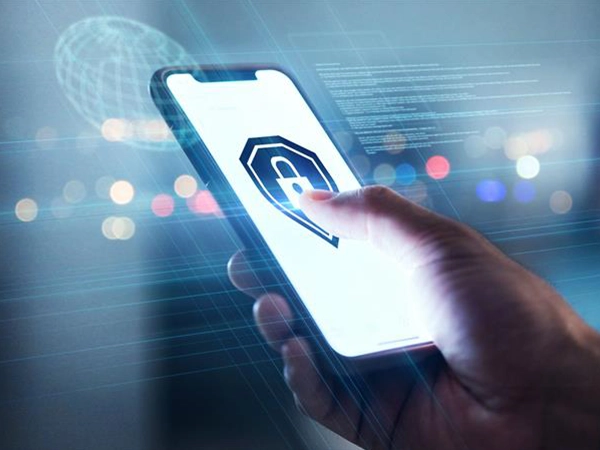When Forgotten Accounts Become Open Doors:
In 2019, a misconfigured identity and access management (IAM) system at a major financial institution left orphaned user accounts still active on its network. One such account, belonging to a former employee whose access was never revoked, was used to breach systems—ultimately exposing the personal data of over 100 million customers. Two years later, the Colonial Pipeline attack demonstrated how even a single set of compromised credentials—long after they were needed—could cripple critical national infrastructure.
These high-profile incidents aren’t anomalies. Across industries, unmonitored identities and forgotten permissions have become silent enablers of data breaches, service disruptions, and reputational damage.
Understanding the Identity Lifecycle

Rather than retroactively investigating “who did what” after an attack, leading organizations adopt a proactive approach: manage every identity from creation to removal. A mature identity lifecycle includes:
- Provisioning: Assign accounts with appropriate access based on role, using the principle of least privilege.
- Modification: Adjust permissions as roles change to prevent privilege creep.
- Monitoring: Track login activity, device types, and locations to quickly flag anomalies.
- De-provisioning: Immediately revoke access when users leave or no longer require it—closing potential backdoors..
Why This Matters—A Tale of Two Threats
Imagine a fast-growing tech company: new hires onboard weekly, contractors cycle in and out, and service accounts are spun up for projects. Amid the growth, old accounts remain active and permissions go unchecked.
Insider Misuse: A former engineer, still able to access systems, downloads sensitive product plans.
External Attack: A hacker exploits a dormant admin account—unused, but still privileged—to move laterally across systems undetected.
Each case results in costly incident response, potential regulatory action, and long-term damage to customer trust.
Building Your Identity Management Foundation
Getting identity management right isn’t just about ticking boxes—it’s about embedding security into everyday operations. Here’s how to start:
1. Define Clear Policies
- Document who owns each step of the identity lifecycle.
- Specify the approval process for new accounts, role changes, and de-provisioning.
2. Leverage the Right Technologies
- Identity Governance & Administration (IGA): Automate provisioning, de-provisioning, and reporting.
- Privileged Access Management (PAM): Secure, rotate, and audit high-risk credentials.
- Single Sign-On (SSO) & Multifactor Authentication (MFA): Simplify user workflows while enforcing stronger authentication.
From IGA to enforcing SSO and MFA, it’s clear that identity and access management now extends deeply into cloud environments — a key point highlighted in our recent cloud security audits blog
3. Integrate with HR Systems
- Sync user status with onboarding, promotions, role transfers, and offboarding—eliminating manual hand-offs and human error.
4. Implement Continuous Monitoring
- Use anomaly-detection tools that flag odd login times, unusual locations, or spikes in privilege usage.
- Set up real-time alerts so security teams can investigate before minor issues become major breaches.
5. Conduct Regular Reviews and Audits
- Schedule quarterly or monthly access reviews to catch orphaned accounts or misaligned permissions.
- Run simulated scenarios—onboarding a fake employee or deactivating a dummy account—to test your processes without real-world risk.
6. Listen to the regulatory or industry ecosystem
- Regulatory mandates/guidelines issued by regulators like Reserve Bank of India (RBI) and Insurance Regulatory and Development Authority of India (IRDAI) establish baseline cybersecurity controls, governance frameworks, and mandatory audits that directly strengthen organisational resilience.
The frameworks and guidelines such as by RBI and IRDAI underscore the importance of robust identity and access management. These mandates require financial and insurance entities to enforce strict authentication mechanisms, implement role-based and least-privilege access models, monitor and control privileged accounts, and perform regular access reviews. Additionally, the IRDAI’s Cyber Incident Preparedness Circular (March 24, 2025) emphasizes secure user provisioning, timely de-provisioning, and maintaining auditable access logs, while its 2023 Guidelines focus on multi-factor authentication (MFA) and segregation of duties for critical systems. By embedding these IAM-specific controls into security governance, organisations can ensure compliance, prevent unauthorized access, and establish a strong foundation for zero-trust security.
The Roadmap to Lasting Assurance
Security threats evolve—your identity management program must, too. Consider these next-level steps:
- AI-Powered Anomaly Detection: Machine learning tools can spot subtle deviations in access patterns that humans might miss.
- Security Awareness Campaigns: Teach every team member why identity hygiene matters—from the CEO to the newest intern.
- Dedicated Identity Governance Board: Establish a cross-functional team to oversee policies, assess emerging risks, and drive continuous improvement.
- Zero Trust Mindset: Assume no identity or device is inherently trustworthy; verify everything, all the time.
Let’s Lock the Doors Before They’re Exploited
Every identity—whether a human user or a service account—is a potential doorway into your systems. Left unmanaged, these doors swing wide open to anyone who grasps the handle.
But with a proactive, lifecycle-oriented identity management strategy, you don’t wait for an incident to expose your gaps—you close them first.
Start taking control of your identities today, and transform forgotten accounts from silent threats into pillars of a resilient cybersecurity posture.
References:
- ISO/IEC 27001: Section A.9.2 (User Access Management)
- ISO/IEC 27002: Section 9.2 (User Access Management)
- NIST SP 800-53: AC-2 (Account Management), AC-3 (Access Enforcement)
- CIS Controls: Control 6 (Access Control Management)
- OWASP: “OWASP Application Security Verification Standard” (ASVS), focusing on authentication controls
- Forrester Research (2021): Zero Trust Framework: Integrating identity lifecycle management into Zero Trust architectures [White paper]











